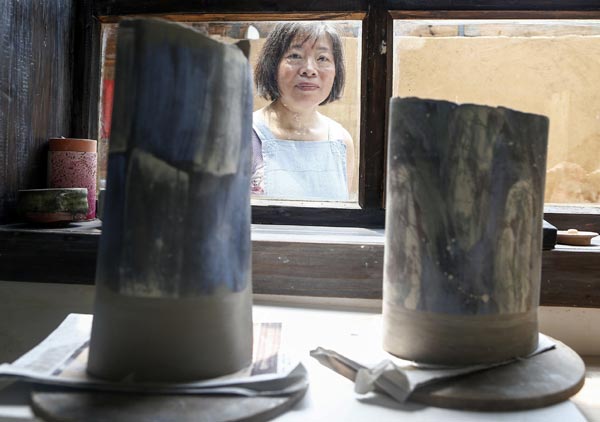

Yuk Kan Yeung is spending more than four weeks as artist in residence at the Sanbao Ceramic Art Institute in Jingdezhen. Zhang Hao / China Daily
Global commodity
During the Song Dynasty (960-1279), potters in the city discovered the secret of making porcelain when they added kaolin to the China stone - a feldspar-rich form of granite - used in the production of pottery, and raised the temperatures in their kilns to 1,300 C and higher. The discovery led to the city being named after the era name of the emperor of the time, Jingde.
The resulting material was strong, translucent and brilliantly white, which facilitated the production of elaborate vessels with unparalleled potential for decoration, and for which there was unprecedented demand.
As one of the first and the most-important global commodities, porcelain helped to introduce Chinese culture, art and the name of Jingdezhen to the world, and it is still a pillar industry and symbol of the city.
Although the city has many modern ceramic factories, the ancient kilns have been well-preserved, and customers can purchase porcelain fired in 300-year-old wooden kilns, built during the Qing Dynasty (1644-1911).
In her studio at Sanbao, Yeung patiently polished a cylindrical vessel while blocks of clay were flattened with rolling pins, potters' wheels whirred, and completed works were brushed with a glaze. A stream runs outside the studio, which is set against a backdrop of leafy mountains, and the sound of the water hammers reminds visitors that China stone is still being broken down in the studio, where clay is still made in accordance with ancient methods.
Later, Yeung draw a series of small holes around the rim of a plate she was making - a design inspired by the lotus root, which resembles an old-fashioned telephone dial.
Born and raised in Hong Kong, Yeung said her residency in Jingdezhen is part of a voyage of discovery into her roots. "In Jingdezhen, I can focus on my pottery and really experience the ceramic tradition and Chinese culture," she said.
Sanbao plays host to more than 100 foreign artists every year, according to Li Wenying, the institute's manager. In 2004, when Jingdezhen celebrated its 1,000 anniversary, more than 3,000 foreign artists visited the institute to pay homage to the famous ceramics industry.
Copyright ©1999-2018
Chinanews.com. All rights reserved.
Reproduction in whole or in part without permission is prohibited.